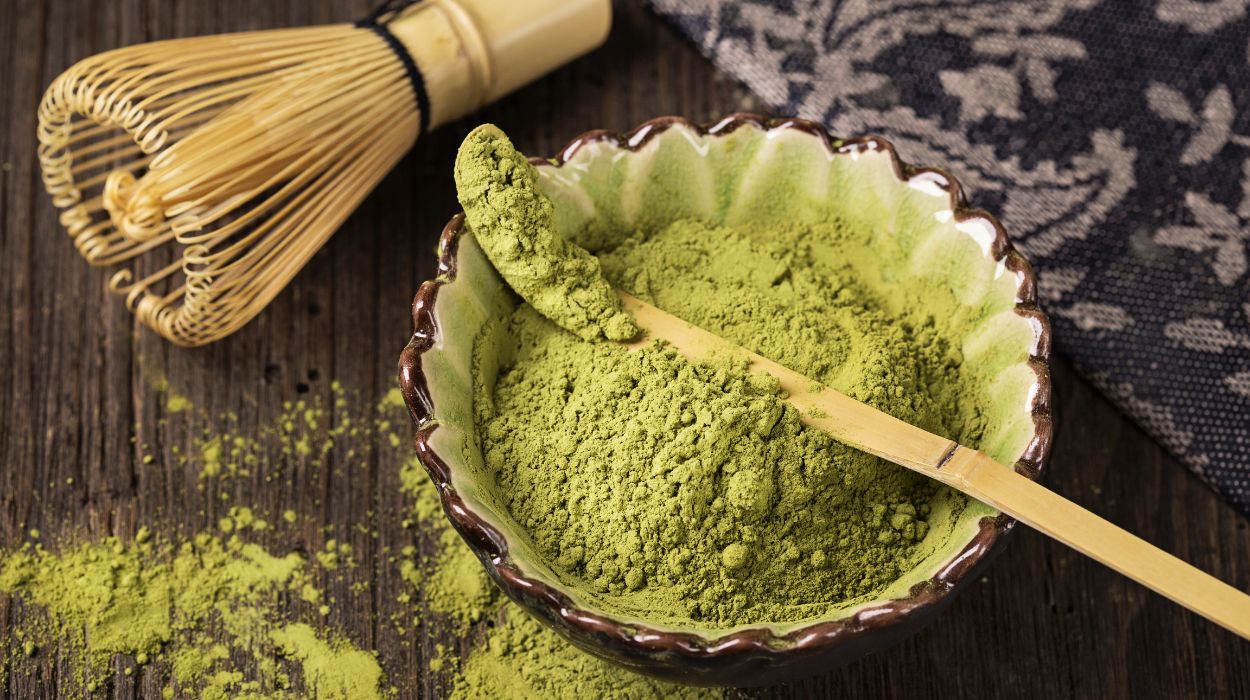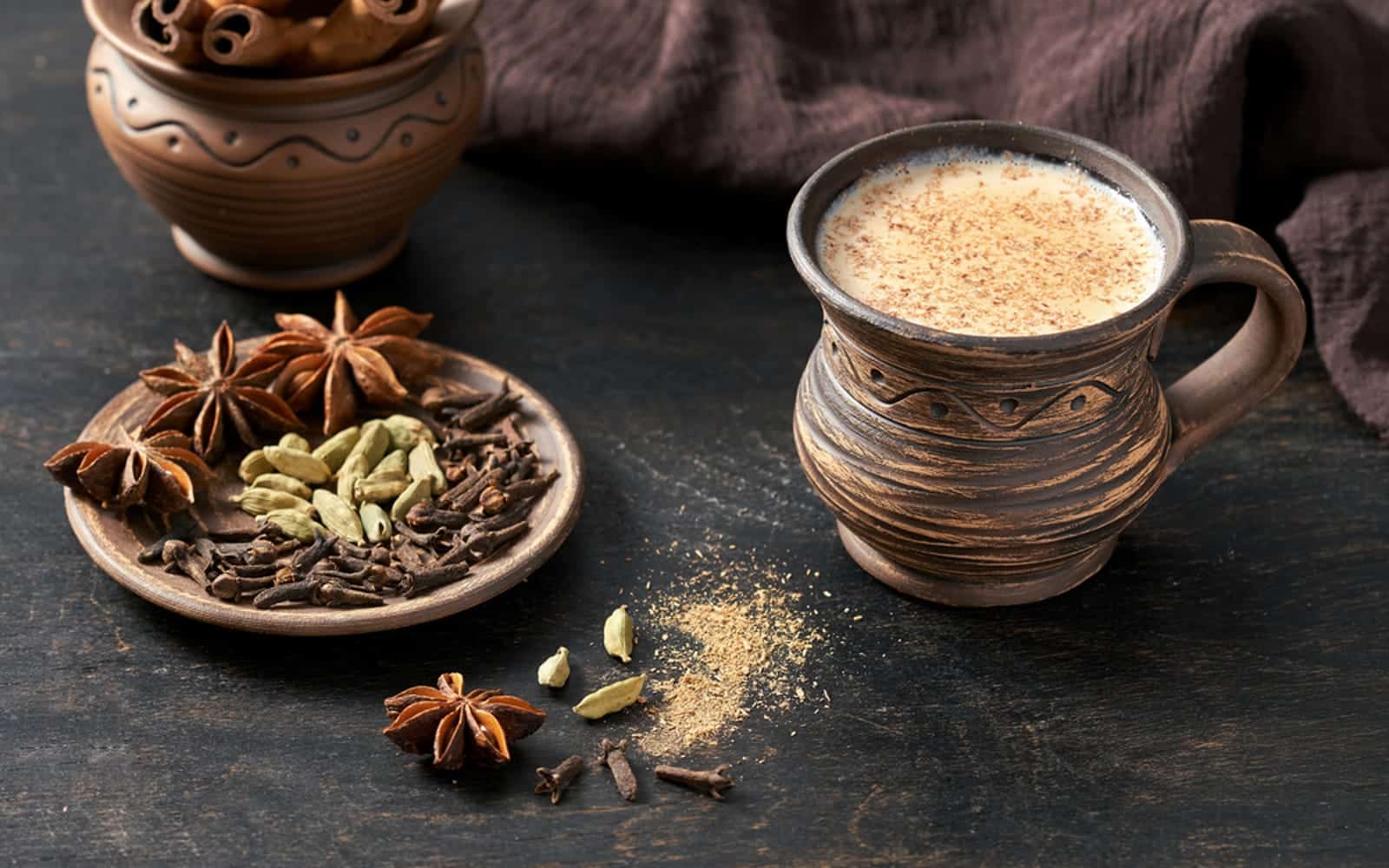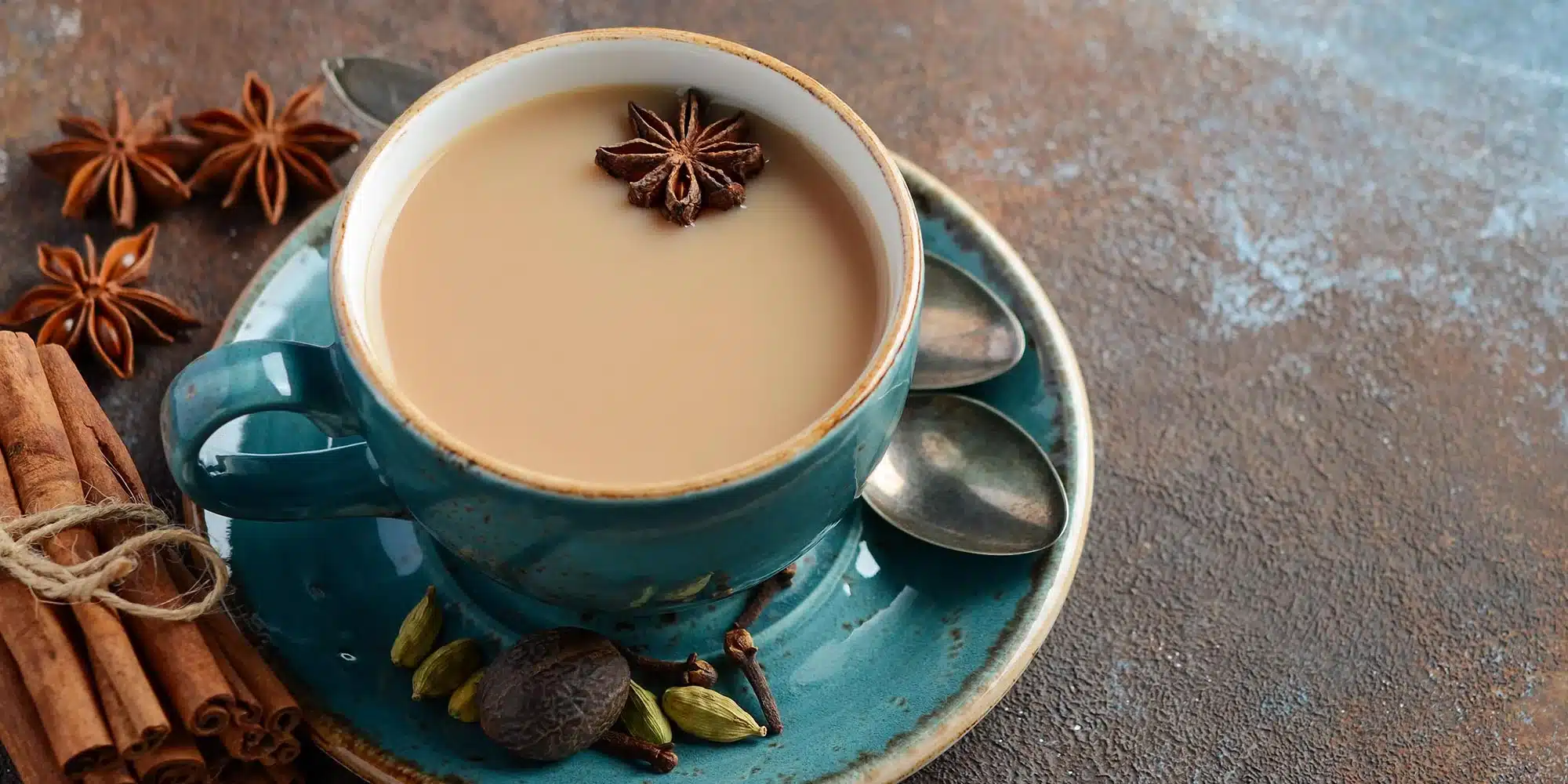In recent years, both Matcha and Chai have surged in popularity, captivating tea enthusiasts and health-conscious individuals alike. Each offers a unique blend of flavors, aromas, and health benefits that have made them favorites in many cultures around the world. Matcha, with its vibrant green hue and rich history rooted in Japanese tea ceremonies, provides a serene yet invigorating experience. On the other hand, Chai, with its warm, spicy notes and origins in Indian tradition, brings comfort and warmth in every sip. This article dives into the world of Matcha and Chai, comparing their benefits, flavors, and uses to help you decide which one might be the best fit for your lifestyle and taste preferences.
Quick Summary
- Matcha:
- Origin: Japan
- Benefits: High in antioxidants, boosts metabolism, enhances mood and concentration, rich in vitamins and minerals
- Flavor: Earthy, grassy, slightly sweet
- Caffeine: Moderate to high
- Chai:
- Origin: India
- Benefits: Supports digestion, anti-inflammatory, boosts immune system, enhances cardiovascular health
- Flavor: Spicy, warming, sweet
- Caffeine: Low to moderate
What is Matcha?

Matcha is a finely ground powder derived from specially cultivated and processed green tea leaves, known scientifically as Camellia sinensis. Originating in Japan, this vibrant green tea powder has been a staple of Japanese culture for centuries, particularly in traditional tea ceremonies.
Definition and Origin of Matcha
Matcha’s history dates back to the Tang Dynasty in China (618–907), where tea leaves were steamed and formed into bricks for easy transport and trade. The practice of grinding tea leaves into a fine powder and whisking it into hot water began in the Song Dynasty (960–1279). Zen Buddhist monks brought this method to Japan, where it evolved into the Matcha we know today. The Japanese refined the cultivation and preparation techniques, making Matcha a central part of their culture and Zen Buddhism practices.
Key Ingredients and Nutritional Profile
Matcha is renowned for its rich nutritional profile, which includes a unique combination of vitamins, minerals, antioxidants, and amino acids.
- Antioxidants: Matcha is especially high in catechins, a type of antioxidant. The most potent catechin in Matcha is epigallocatechin gallate (EGCG), which is known for its cancer-fighting properties. Matcha contains up to 137 times more EGCG than other types of green tea.
- Amino Acids: The shading process increases the levels of L-theanine, an amino acid that promotes relaxation and reduces stress. L-theanine also works synergistically with caffeine to enhance cognitive function and provide a calm, focused energy.
- Vitamins and Minerals: Matcha is rich in vitamins A, C, E, K, and several B vitamins. It also contains important minerals such as potassium, calcium, magnesium, zinc, and iron.
- Fiber: Since Matcha is made from whole tea leaves, it retains all the dietary fiber present in the leaves, contributing to better digestion and regularity.
What is Chai?
Chai, also known as Masala Chai, is a spiced tea blend that has been a cornerstone of Indian culture for centuries. The word “Chai” simply means “tea” in Hindi, while “Masala” refers to a mixture of spices. This aromatic and flavorful beverage is traditionally made by brewing black tea with a combination of spices, milk, and a sweetener.
Definition and Origin of Chai
The origin of Chai can be traced back over 5,000 years to ancient India, where it was originally used as an Ayurvedic remedy. The traditional recipe included a variety of spices, known for their healing properties, and was often prepared without tea leaves or caffeine. It wasn’t until the British colonization of India and the establishment of tea plantations in the 19th century that black tea was introduced into the blend, creating the Masala Chai we know today.
What is Chai?
Chai, also known as Masala Chai, is a spiced tea blend that has been a cornerstone of Indian culture for centuries. The word “Chai” simply means “tea” in Hindi, while “Masala” refers to a mixture of spices. This aromatic and flavorful beverage is traditionally made by brewing black tea with a combination of spices, milk, and a sweetener.
Definition and Origin of Chai
The origin of Chai can be traced back over 5,000 years to ancient India, where it was originally used as an Ayurvedic remedy. The traditional recipe included a variety of spices, known for their healing properties, and was often prepared without tea leaves or caffeine. It wasn’t until the British colonization of India and the establishment of tea plantations in the 19th century that black tea was introduced into the blend, creating the Masala Chai we know today.
Key Ingredients and Nutritional Profile
Chai’s nutritional profile is influenced by its ingredients, each contributing unique health benefits and flavors:
- Black Tea: Rich in antioxidants such as theaflavins and catechins, black tea helps combat free radicals, reduce oxidative stress, and support heart health.
- Cardamom: Known for its digestive and detoxifying properties, cardamom also adds a sweet, floral note to Chai.
- Cinnamon: This spice has anti-inflammatory and antioxidant properties, helps regulate blood sugar levels, and adds a warm, sweet flavor.
- Ginger: A powerful anti-inflammatory and digestive aid, ginger adds a spicy kick to Chai.
- Cloves: These have antiseptic properties and are rich in antioxidants, contributing a warm, slightly sweet, and aromatic flavor.
- Black Pepper: Enhances nutrient absorption and adds a sharp, spicy note.
- Milk: Provides calcium, vitamin D, and protein, contributing to the overall nutritional value of Chai.
Health Benefits of Matcha

Matcha is renowned not only for its vibrant green hue and unique flavor but also for its impressive health benefits. This finely ground green tea powder is packed with nutrients and bioactive compounds that contribute to overall well-being. Here’s a detailed look at the health benefits of Matcha.
Antioxidant Properties
Matcha is exceptionally high in antioxidants, particularly catechins, which are powerful compounds that help prevent cell damage. The most notable catechin in Matcha is epigallocatechin gallate (EGCG), known for its potent cancer-fighting properties. Studies suggest that EGCG can reduce the risk of various cancers by inhibiting the growth of cancer cells and promoting their apoptosis (programmed cell death). Additionally, the antioxidants in Matcha protect against oxidative stress, which is linked to chronic diseases such as heart disease, diabetes, and neurodegenerative disorders.
Boosts Metabolism and Burns Calories
One of the well-known benefits of Matcha is its ability to boost metabolism and enhance fat burning. The catechins in Matcha, particularly EGCG, have been shown to increase thermogenesis, the body’s rate of burning calories. Consuming Matcha can elevate the number of calories burned during physical activity and at rest. A study published in the American Journal of Clinical Nutrition found that consuming green tea extract, rich in catechins, led to a significant increase in energy expenditure and fat oxidation.
Enhances Mood and Aids in Concentration
Matcha contains a unique combination of L-theanine and caffeine, which work together to enhance brain function and improve mood. L-theanine, an amino acid found in tea leaves, promotes relaxation without drowsiness by increasing the production of alpha waves in the brain. This results in a state of calm alertness. Combined with the moderate caffeine content in Matcha, L-theanine provides a balanced energy boost that enhances concentration and cognitive performance without the jitteriness often associated with coffee. Studies have shown that this combination can improve reaction time, memory, and overall mental clarity.
Rich in Vitamins and Minerals
Matcha is a nutrient-dense beverage, offering a wide array of vitamins and minerals essential for maintaining good health. It is rich in:
- Vitamins: Matcha contains high levels of vitamins A, C, E, K, and several B vitamins. Vitamin A is crucial for vision and immune function, vitamin C boosts the immune system and promotes healthy skin, vitamin E acts as an antioxidant, and vitamin K plays a role in blood clotting and bone health.
- Minerals: Matcha provides important minerals such as potassium, calcium, magnesium, zinc, and iron. These minerals are vital for various bodily functions, including maintaining electrolyte balance, bone health, muscle function, and oxygen transport.
Health Benefits of Chai

Chai, with its rich blend of spices and black tea, is more than just a flavorful beverage; it is a treasure trove of health benefits. The combination of traditional spices used in Chai offers a unique synergy of therapeutic properties that support overall health and well-being. Here’s an in-depth look at the health benefits of Chai.
Supports Digestive Health
One of the primary benefits of Chai is its ability to support digestive health. This is largely due to the inclusion of spices such as ginger, cardamom, and black pepper, each of which plays a vital role in promoting digestive function.
- Ginger: Known for its powerful digestive properties, ginger helps to stimulate saliva, bile, and gastric enzymes, aiding in the breakdown and absorption of food. It is also effective in reducing nausea, vomiting, and gastrointestinal discomfort.
- Cardamom: This aromatic spice has been used for centuries to treat digestive issues. It helps in relieving bloating, heartburn, and stomach cramps. Cardamom also stimulates the production of digestive enzymes, facilitating better digestion.
- Black Pepper: Black pepper increases the secretion of hydrochloric acid in the stomach, which is necessary for the digestion and absorption of nutrients. It also has carminative properties that help reduce gas formation and discomfort.
Anti-inflammatory Properties
Chai’s anti-inflammatory properties are attributed to spices like ginger, cinnamon, and cloves, which have been extensively studied for their ability to reduce inflammation.
- Ginger: Contains gingerols, which have potent anti-inflammatory and antioxidant effects. Ginger is effective in reducing inflammation and pain, making it beneficial for conditions like arthritis and muscle soreness.
- Cinnamon: This spice contains cinnamaldehyde, which has been shown to reduce inflammation and act as an antioxidant. Cinnamon helps lower inflammatory markers in the body, which can prevent chronic diseases.
- Cloves: Rich in eugenol, cloves possess strong anti-inflammatory properties. Eugenol helps to reduce inflammation and pain, and is also known for its antioxidant benefits.
Boosts Immune System
Chai can play a significant role in boosting the immune system due to its high antioxidant and antimicrobial properties. The blend of spices used in Chai contributes to enhanced immune function.
- Cinnamon and Cloves: Both contain antibacterial, antiviral, and antifungal properties, which help protect the body from infections.
- Cardamom: Known for its immune-boosting properties, cardamom enhances the body’s ability to fight off pathogens.
- Black Tea: Rich in antioxidants such as catechins and theaflavins, black tea helps to strengthen the immune system by neutralizing harmful free radicals and supporting the production of white blood cells.
Enhances Cardiovascular Health
Regular consumption of Chai can support heart health in several ways, thanks to the combined benefits of black tea and spices.
- Black Tea: Contains flavonoids that help reduce LDL (bad) cholesterol and improve HDL (good) cholesterol levels. Flavonoids also improve blood vessel function and reduce the risk of cardiovascular diseases.
- Cinnamon: Helps to lower blood sugar levels and improve insulin sensitivity, which can reduce the risk of diabetes and heart disease. It also helps in reducing total cholesterol, LDL cholesterol, and triglycerides, while maintaining HDL cholesterol levels.
- Ginger and Cloves: Both have been shown to improve circulation and prevent the formation of blood clots. This can lower the risk of stroke and heart attacks.
Flavor Profile and Taste
Both Matcha and Chai have distinctive and complex flavor profiles that cater to different taste preferences. Understanding the nuances of their flavors can enhance your appreciation and enjoyment of these beverages.
Matcha
Matcha’s flavor is a unique combination of several sensory experiences, which can be described as follows:
- Umami: Often referred to as the fifth taste, umami is a savory, rich flavor that is prominent in Matcha. This is due to the high levels of amino acids, particularly L-theanine, that develop during the shading process before harvest.
- Grassy and Vegetal Notes: Matcha has a strong, fresh, grassy flavor reminiscent of fresh green vegetables or spinach. This vegetal note is more pronounced in higher-quality Matcha, which is grown and processed with meticulous care.
- Bitterness and Astringency: Matcha can have a slight bitterness, especially if it is lower in quality or not prepared correctly. This bitterness is balanced by its natural sweetness and umami flavors.
- Sweetness: Despite its bitterness, good quality Matcha has a subtle sweetness that lingers on the palate. This sweetness is enhanced when Matcha is prepared with the traditional whisking method, which creates a frothy, creamy texture.
- Creamy and Smooth Texture: The fine powder consistency of Matcha, when whisked with hot water, results in a smooth, creamy texture that is unlike any other tea. This velvety mouthfeel is part of what makes Matcha so enjoyable.
Chai
Chai, or Masala Chai, is celebrated for its bold, warming spices and aromatic qualities. Its flavor profile includes a symphony of spices that create a rich and satisfying taste experience:
- Spicy and Warming: The dominant flavors in Chai come from spices like ginger, black pepper, and cloves, which impart a warming sensation that is both invigorating and comforting. These spices give Chai its characteristic spiciness and warmth.
- Sweet and Aromatic: Spices such as cinnamon and cardamom contribute sweet, floral, and aromatic notes that balance the spiciness. Cinnamon adds a sweet and woody flavor, while cardamom brings a floral and slightly citrusy note.
- Earthy and Robust: The base of Chai is usually black tea, which provides a strong, earthy foundation. The robustness of black tea complements the bold spices, creating a well-rounded flavor.
- Creamy and Smooth: Traditionally prepared with milk, Chai has a rich and creamy texture. The milk not only adds smoothness but also mellows the spices, creating a harmonious blend of flavors. Non-dairy alternatives like almond, soy, or oat milk can also be used, each adding its unique flavor and texture.
- Sweetness: Chai is typically sweetened with sugar, honey, or jaggery. The sweetness enhances the spices and balances the overall flavor, making it more palatable and enjoyable.
Comparison of Taste and Versatility
Both Matcha and Chai offer unique and versatile flavors that can be enjoyed in various forms and preparations:
- Matcha: Matcha’s earthy, umami-rich flavor makes it versatile in both sweet and savory applications. It can be enjoyed as a traditional tea, whisked with hot water, or incorporated into modern recipes like Matcha lattes, smoothies, and baked goods. Its unique flavor pairs well with ingredients like vanilla, almond, and citrus, making it a favorite in creative culinary uses.
- Chai: Chai’s bold, spicy, and aromatic profile makes it a comforting beverage that can be enjoyed in many forms. Traditional Masala Chai is prepared by boiling tea with spices, milk, and sweetener, but it can also be adapted into iced Chai, Chai lattes, and even Chai-flavored desserts like cookies and cakes. The versatility of Chai allows for endless variations, depending on personal taste and dietary preferences.
Uses
Matcha and Chai are versatile ingredients that can be incorporated into a variety of culinary creations, enhancing their flavor and health benefits. Matcha’s unique, earthy flavor makes it an excellent addition to both traditional and contemporary recipes. It can be enjoyed as a frothy, vibrant green tea by whisking the powder with hot water, or as a creamy Matcha latte when combined with steamed milk and a sweetener of choice. For a nutritional boost, Matcha can be blended into smoothies, adding a subtle, grassy flavor. It also lends itself well to baked goods such as cakes, cookies, muffins, and pancakes, imparting a unique taste and vibrant green color. Additionally, Matcha can be used in desserts like ice cream and puddings, offering a sophisticated and delicious twist.
Chai’s rich, spicy flavor profile makes it equally versatile in various culinary applications. Traditional Chai tea is made by brewing a mix of Chai spices with black tea, milk, and a sweetener, creating a comforting and aromatic beverage. For a creamier texture, Chai can be made into a latte by increasing the ratio of steamed milk. During warmer months, Chai can be prepared and cooled to serve over ice, providing a refreshing twist. Chai spices are also excellent in baked goods such as cakes, cookies, and breads, infusing them with warm, aromatic flavors. Chai spices can be added to oatmeal for a cozy, spiced breakfast, enhancing the flavor and providing a warming start to the day.
To further enhance the nutritional profile and health benefits of both Matcha and Chai, consider adding Mushroom Powders from Brain Brands. Their Functional Fuel 7 Blend combines seven powerful mushrooms known for their health-enhancing properties. Adding a teaspoon of this blend to Matcha tea or latte complements the earthy flavor of Matcha and provides an extra nutritional boost. Similarly, mixing the mushroom powder into Chai tea or latte enhances the drink with the additional health benefits of mushrooms, while the spices in Chai mask the mushroom flavor.
Conclusion
Choosing between Matcha and Chai can be tough because each has its own unique charm and benefits. Matcha is perfect if you’re looking for a drink that boosts your metabolism, enhances your focus, and provides a rich source of antioxidants, all with a creamy, earthy flavor. On the other hand, Chai offers a warm, spicy embrace, packed with ingredients that support digestion, reduce inflammation, and boost your immune system.
Ultimately, the best choice depends on your personal preferences and health goals. Whether you prefer the smooth, green goodness of Matcha or the comforting, spiced warmth of Chai, both are excellent additions to a healthy lifestyle. Why not try both and see which one you enjoy more? Whichever you choose, you’ll be sipping on a beverage that’s not only delicious but also good for you. So, explore the flavors and benefits of Matcha and Chai, and let your taste buds and well-being guide your choice.



